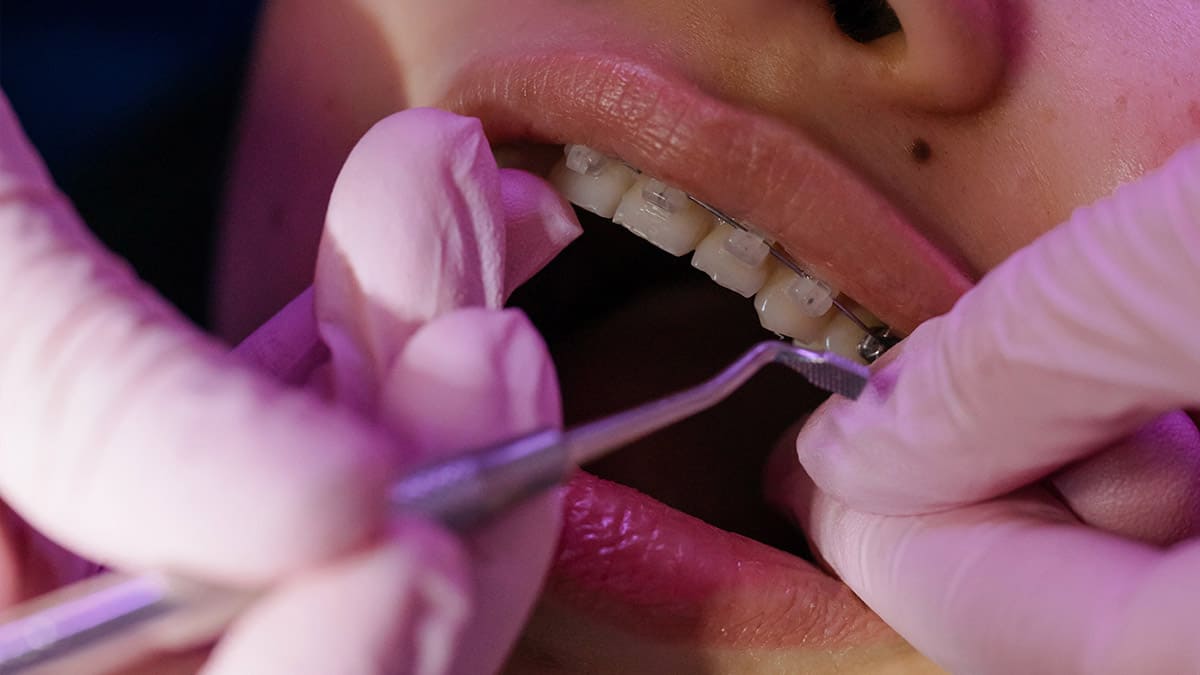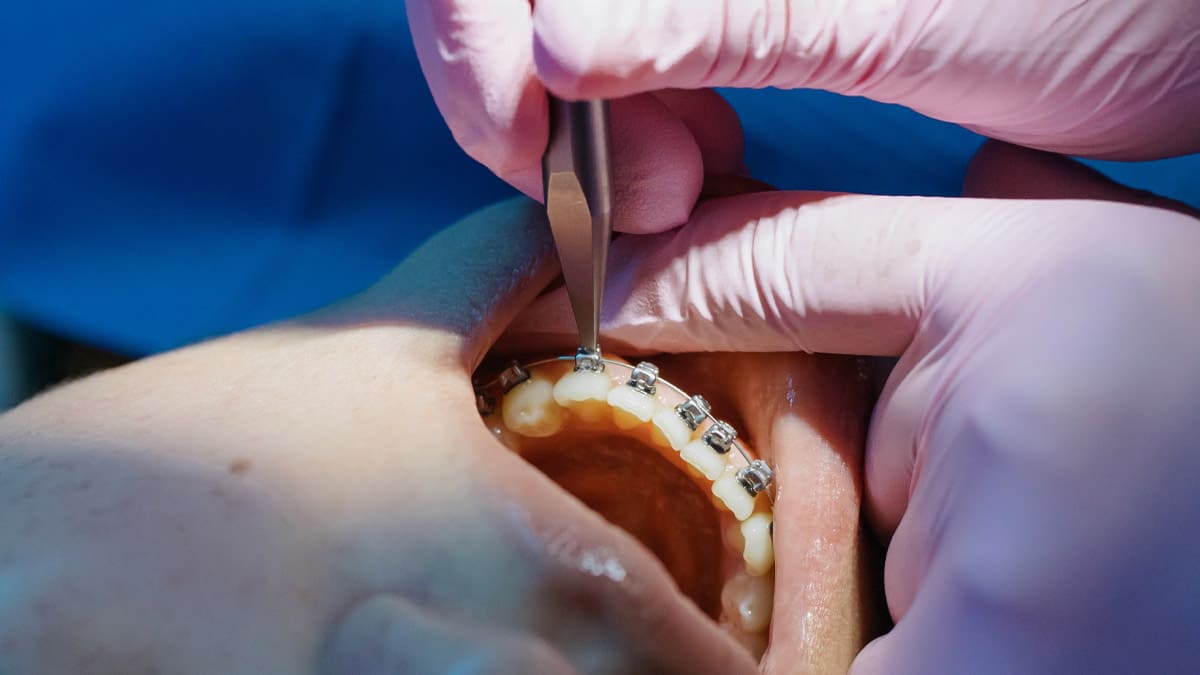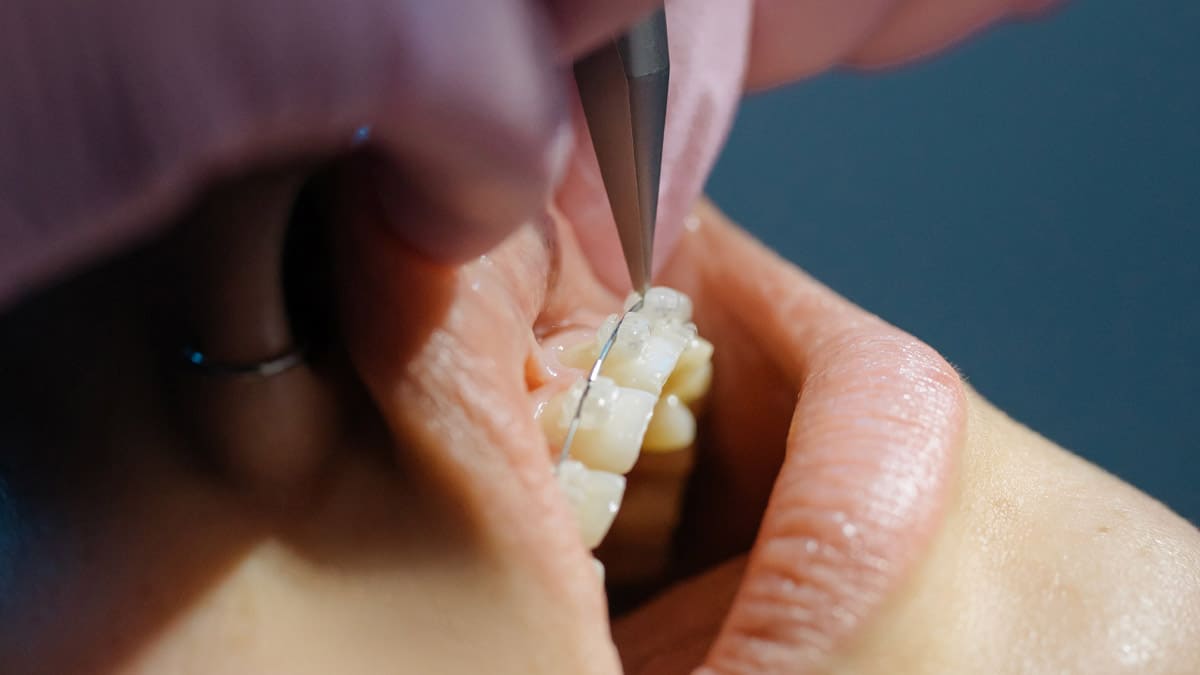How is Braces Treatment Performed?
Orthodontic treatment, commonly known as braces treatment, is a method employed to straighten, align, or correct jaw issues related to the teeth. This treatment typically involves the use of small brackets and wires, which are attached either to the front or back of the teeth.

Examination and Planning: The process begins with an examination by a dentist or orthodontist. This assessment evaluates the condition of the teeth, jaw structure, and the overall health of the patient. The treatment plan outlines how the teeth will be straightened, the materials to be used, the expected duration of treatment, and the associated costs.
Attachment of Brackets: Brackets are affixed to either the front or back surfaces of the teeth. Before this step, the teeth are cleaned and dried. The brackets are then attached using a special adhesive and hardened with a specific light source.
Installation of Wires: Wires are secured to the brackets using a specialized technique. These wires are custom-shaped based on the condition of the teeth and the treatment plan.
Checks and Adjustments: Braces treatment is a gradual process that can span months or even years, depending on the complexity of the case. Regular check-ups are scheduled during this period, and adjustments to the wires are made as needed. These check-ups enable the dentist or orthodontist to monitor the condition of the teeth and track the progress of the treatment.
Completion of Treatment: When the treatment objectives are achieved, the brackets and wires are removed. A thorough evaluation of the teeth is conducted, and the dentist or orthodontist may schedule several follow-up appointments for post-treatment monitoring.
Throughout orthodontic treatment, it is advisable to use specially designed toothbrushes, dental floss, and mouthwash solutions. These specialized oral care tools are essential for maintaining optimal hygiene of the teeth and contribute to the effective completion of the treatment process. The unique design of these tools helps navigate around brackets and wires, ensuring thorough cleaning and reducing the risk of dental issues during the treatment period. Regular and meticulous oral hygiene practices are crucial to support the overall success of orthodontic treatment with braces.
İçindekiler
When is braces treatment done?
Generally, orthodontic treatment is usually done during adolescence, between the ages of 11 and 14. During this period, the teeth are still in the developmental stage and are more easily corrected.
Orthodontic treatment is not limited to the teenage years; it is also suitable for adults. There is no harm in adults wearing braces, and orthodontic treatment can be pursued at any age.
The decision on when to start orthodontic treatment depends on individual factors such as the condition of the teeth, jaw structure, and overall health. Consulting with a dentist or orthodontist is the best way to receive personalized guidance on the most appropriate timing for orthodontic treatment based on an individual’s specific needs.


Orthodontic Treatment in Adults
Orthodontic treatment in adults may necessitate a longer duration and could pose more challenges compared to treatments in younger individuals. Nevertheless, thanks to advancements in modern orthodontic technologies, adult orthodontic treatment can now be conducted more comfortably and in a manner that is aesthetically acceptable.
Orthodontic treatment in adults serves various purposes, addressing issues such as correcting teeth alignment, resolving jaw problems, and enhancing chewing function. Different orthodontic appliances, including braces, brackets, removable plates, or clear aligners, can be utilized for adult orthodontic treatment.
The benefits of orthodontic treatment in adults encompass correcting teeth alignment, improving jaw structure, promoting dental health, and enhancing aesthetic appearance. However, it may not be suitable for everyone, especially in cases of gum problems, jaw joint issues, or excessive teeth grinding. Consulting with a dentist or orthodontist is crucial to determine the most suitable treatment plan based on an individual’s specific condition.

Orthodontic Treatment in Children
Orthodontic treatment in children is a treatment method used to correct and align teeth and jaw problems. This treatment is very important for maintaining dental health and aesthetic appearance.
The primary objective of orthodontic treatment is to ensure the proper positioning of teeth and the correct development of the jaw structure. Treatment typically commences around 7-9 years of age when children’s teeth are still in the developmental stage.
In children, orthodontic treatment employs various appliances such as braces, wires, plates, or clear aligners. Braces and wires facilitate the movement and straightening of teeth, while plates restrict tooth movement to aid in alignment. Clear aligners guide the movement of teeth to contribute to their straightening.
Orthodontic treatment in children serves multiple purposes, including correcting misaligned teeth, addressing jaw problems, and improving chewing function. The benefits of this treatment extend to maintaining dental health, enhancing aesthetics, and supporting proper jaw development.
Ensuring healthy teeth and a well-balanced mouth in children, orthodontic treatment is vital. Regular monitoring of children’s dental health and timely orthodontic intervention, when necessary, contribute to their overall oral well-being.
What should be considered in the treatment of braces?
Orthodontic treatment with braces is a method used to straighten and align teeth, and there are some important points to consider during the course of treatment.
Maintaining oral hygiene is crucial during orthodontic treatment, especially when using braces and wires. Braces can create challenges in cleaning teeth, leading to an increased risk of plaque and tartar accumulation. Individuals with braces should be meticulous in their brushing and flossing routines. Using dental care products recommended by the dentist can further support oral hygiene.
Dietary considerations are also important. It is advisable to avoid hard, sticky, and sugary foods, as these can pose a risk to braces. Particularly, sticky foods like chips, caramel, gum, and chocolate can adhere to the braces and wires, increasing the likelihood of damage or dislodgement. Being mindful of dietary choices contributes to the effectiveness and longevity of orthodontic appliances.


Experiencing some discomfort after the placement of braces is normal, and painkillers can be used to alleviate this discomfort. Additionally, the wires and brackets of braces may come into contact with the mouth, leading to potential injuries to the tongue and cheeks. Opting for soft foods can help prevent these injuries.
Dietary considerations remain crucial, and it’s essential to avoid hard, sticky, and sugary foods due to the sensitivity of braces. Sticky foods like chips, caramel, gum, and chocolate pose a risk of pulling off wires and brackets.
Regular check-ups during the braces treatment are essential. Dentists conduct these check-ups at specific intervals to evaluate the condition of the braces and make any necessary adjustments. It’s important not to miss these periodic check-ups recommended by your dentist for the successful progress of your orthodontic treatment.